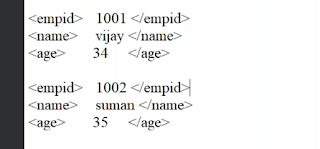SAP Insights: Navigating the Easy Access Screen, Customization Tips, and Project Overview
SAP Easy Access :-
-
After logging to SAP system through GUI, the first screen that appears on system is SAP Easy Access.
-
It is a user specific point of entry.
-
It is also called as SAP User Menu.
-
The user menu contains only those items that are required to perform daily tasks such as transactions, reports etc.
Adding Existing Item as Favorite :-
-
Choose the existing item from the User Menu.
-
Click on Favorites - Add
-
1. ABAP workbench :-
- It is a collection of tools which are used to perform certain specific actions.
- SE38 → Program/Report { ABAP Editor }
- SE11 → ABAP Dictionary
- SE37 → Function Module
- SE24 → Class Builder
2. Transaction Code :-
-
It is a shortcut to access ABAP workbench tools.
Examples :-
- /nxxxx - To call Transaction xxxx ( override the existing session )
- /oxxxx - To call transaction xxxx in a new session , where xxxx is the transaction code.
- /NEX → To close all the sessions
- /n → to cancel a session
- /o → display an overview of sessions
-
User can open a maximum of 6 sessions.
-
Any custom object starts with z or y.
Log Off from SAP System :-
- System → Logoff
-
Transaction Code -/nend - Before log off , one confirmation pop-up appears.
-
Transaction Code - /nex - Log off from SAP without confirmation pop-up.
Theme Settings of SAP GUI :-
-
You can use any of the below mentioned theme according to your preference.
F4 Help :-
-
It tells us what are the various possible values for any input field.
-
just press f4 where you want enter some value.
-
Also known as Value Help.
F1 Help :-
-
It gives us the technical information of any field/column.
-
Just press f1 on the field or column, you will see this kind of popup.
SAP Specific Objects and Customer Specific Objects :-
- Customer Objects - starts with Z or Y.
- SAP specific objects - other than Z or Y.
Concept of Object Navigator, Package, Transport Request :-
-
SE80 → Object Navigator
Package :- It is a collection/container for the objects.( Table, Data element, Domains, Structures, Programs etc. )
- In SAP, every object stored in to a package.
( Package for local objects : $TMP , local objects can never be transported )
-
SE21 :- To create a package.
-
Transport request → Medium to transport the objects.
-
SE09 → To create a transport request. ( Workbench request ).
How to create a transport request in SAP ?
Step 1:- got to SE09 and click on create button.
Note :- We will discuss about all the above requests in upcoming blogs, as for now we are just focusing on workbench request.
Step 2:- select workbench request and press enter and follow below steps.
Step3:- Now we can see, SAP creates a unique number for every requests.
Creating a Package :-
Step 1:- go to SE21 → write a name starting with Z or Y and click on create button and follow the below steps.
- click on ok.
Step 2 :- Provide the transport request and click on ok.
- Package is created , you can check it in SE10.
Main Tables and Transaction Codes for Different Modules of SAP ( Concept of Header and Item Tables ) :-
- Header table in SAP stores main document information, while item table stores details related to each line item. They're linked through a common key for organized data management.
- In every module of SAP, SAP follows the concept of header and item table.
1. SAP Sales and Distribution (SD) →
-
Sales Order Details
-
Transaction Code - VA01( Sales Order Create )
VA02( Sales Order Change ) VA03( Sales Order Display )-
Tables - VBAK ( Sales Document Header )
VBAP ( Sales Document Item )
-
-
Invoice Details
- Transaction Codes → VF01( Billing document Create ), VF02 (Billing Document Change ), VF03 ( Billing document Display )
- Tables :- VBRK(Billing Document Header ) , VBRP ( Billing Document Item ).
2. SAP Material Management ( MM) →
- Material Master
- Transaction Codes :- MM01 (Material Create ), MM02 ( Material Change ) , MM03 ( Material Display )
- Tables - MARA ( Material Data ), MAKT ( Material Description ).
3. SAP FI (Finance ) →
- Accounting Document
- Transaction Codes - FB01 (Accounting Document Create ), FB02 (Accounting Document Change ) , FB03 (Accounting Document Display )
- Tables :- BKPF (Accounting document header ), BSEG (Accounting document item)
Types of Projects in SAP :-
-
There are 4 types of projects in SAP.
- Implementation
- Support
- Upgrade
- Roll out
1. Implementation :-
- In these types of projects, Customer is implementing SAP for the first time. All Legacy system data needs to be migrated to the SAP system.
2. Support :-
- It is also called as Maintenance project. Customer is running his business through SAP. Customer requires support for the daily issues, tickets, and new change requests(CR).
3. Upgrade :-
- In this type of project, customer is moving from older version of SAP to higher version of SAP.
4. Roll out :-
- In this type of project, the existing SAP system is going to implement for different countries/region.












.png)
.png)

Very Informative
ReplyDelete